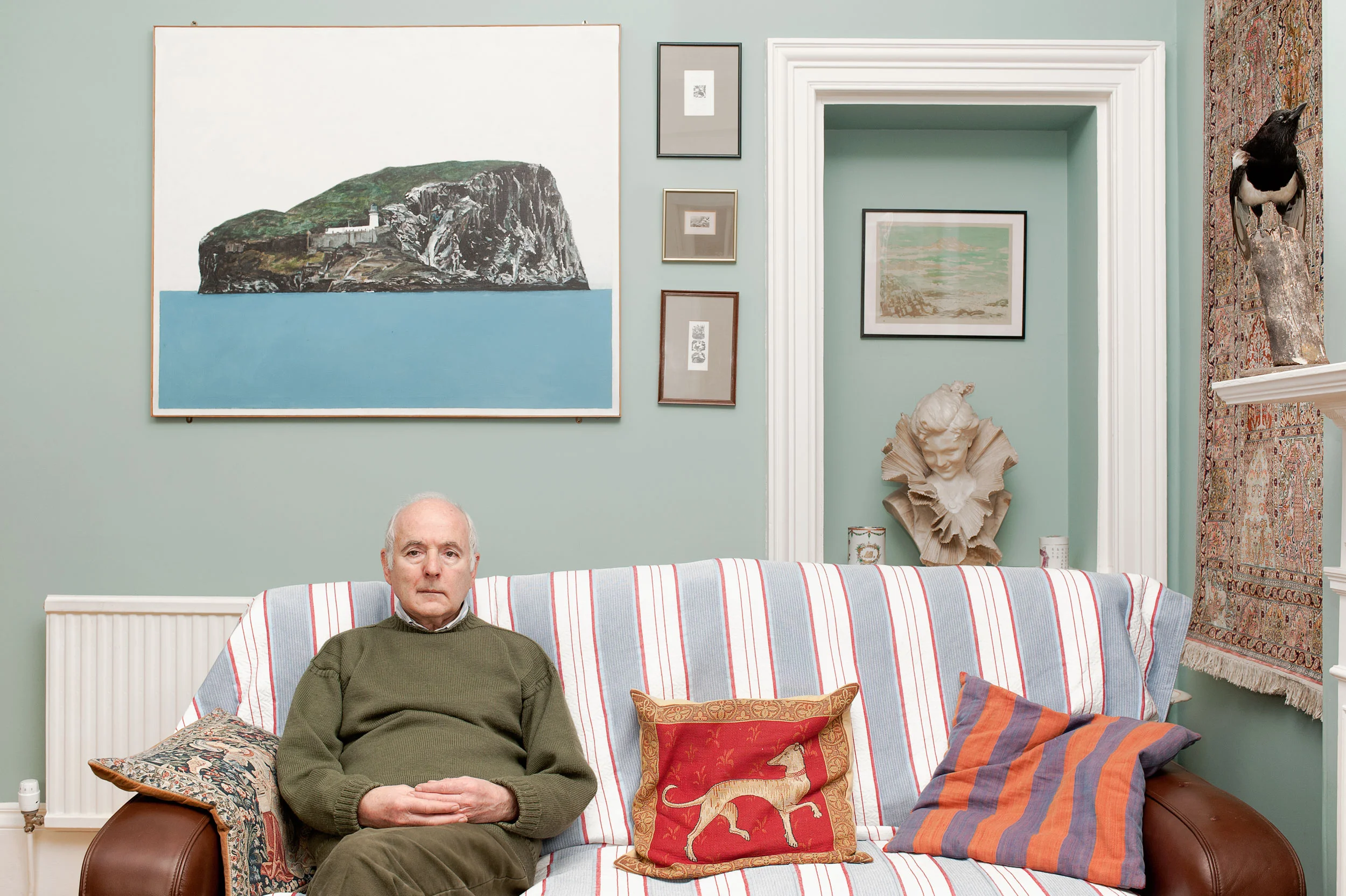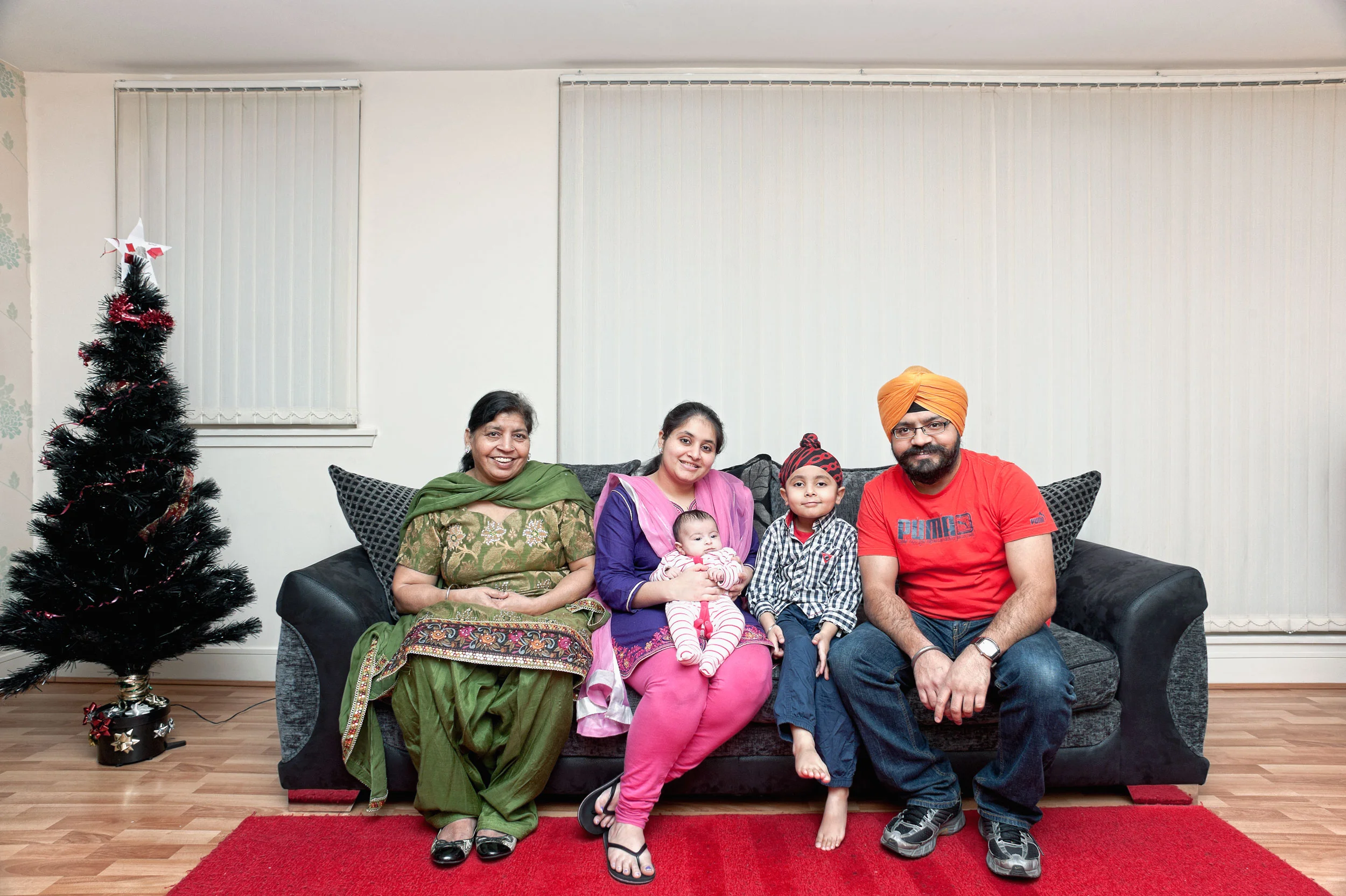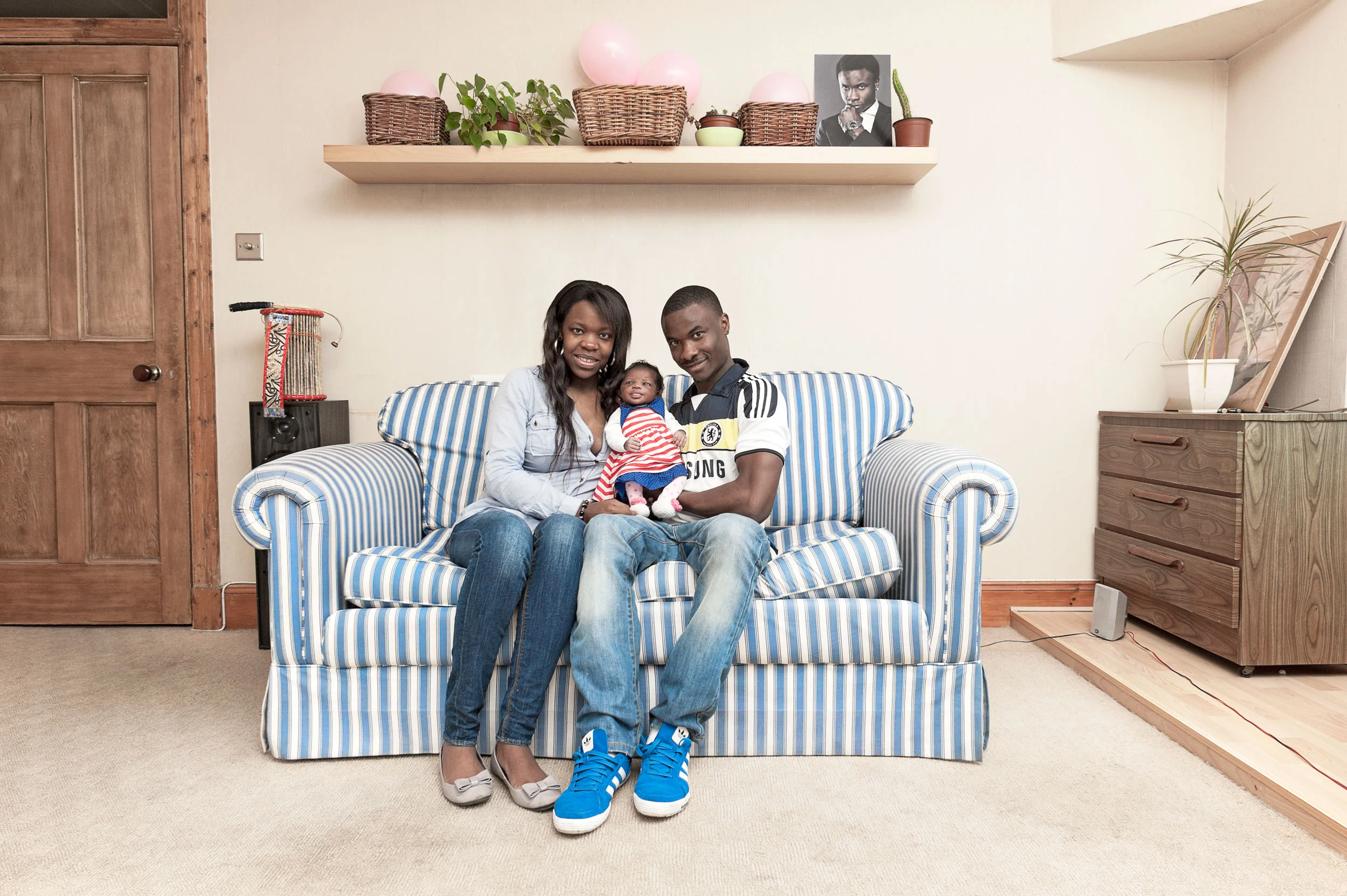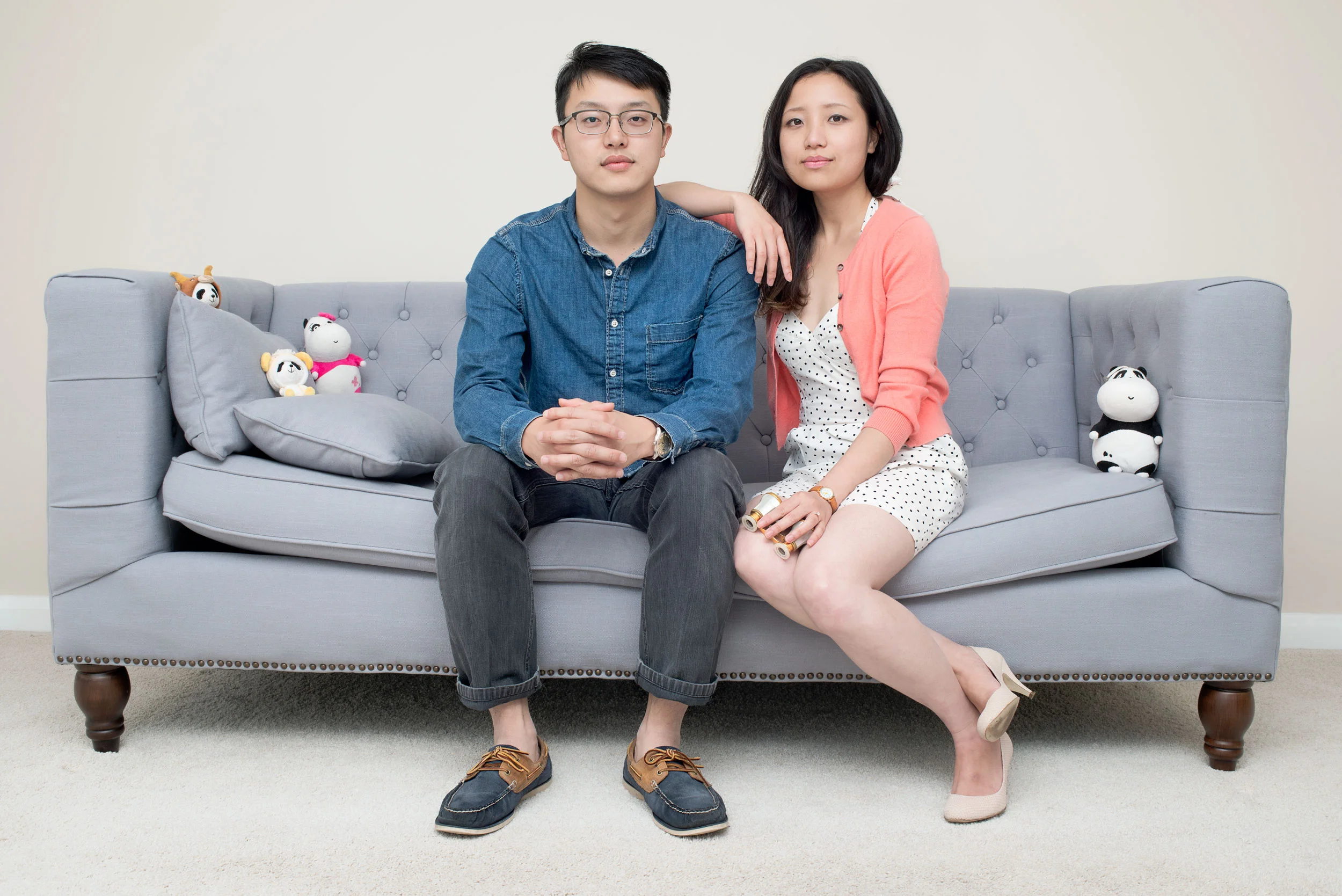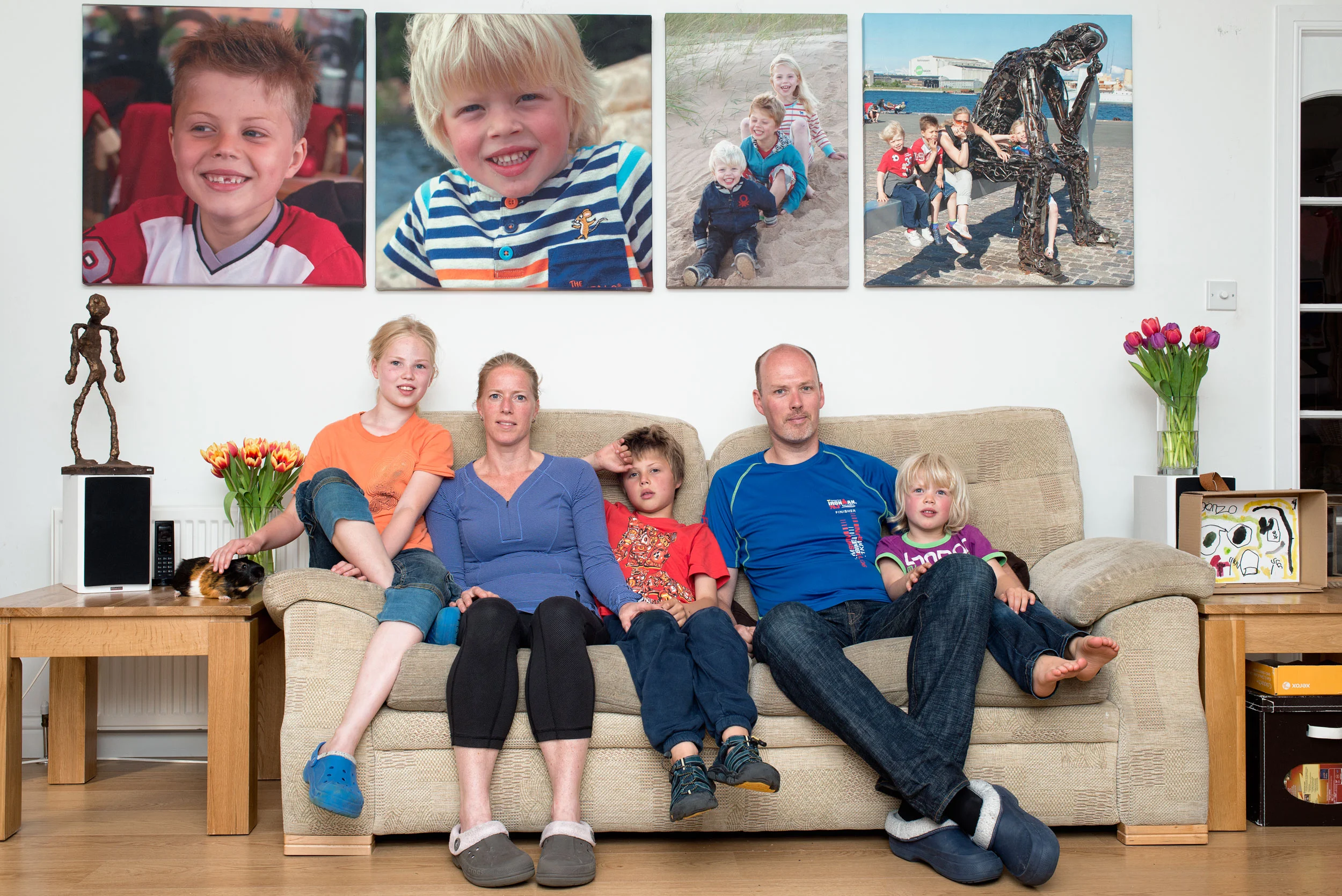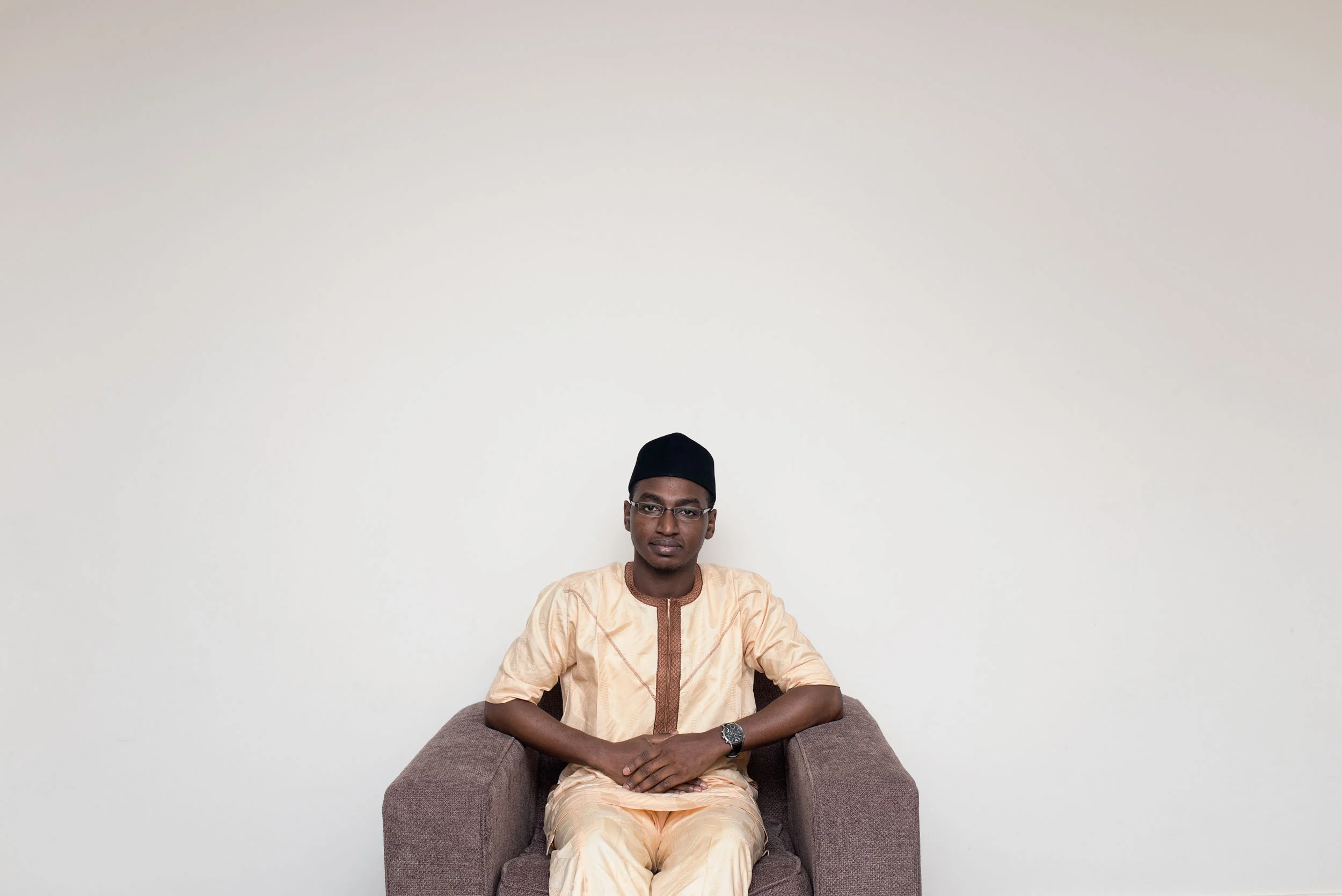"The Neighbours" was an attempt to create a portrait of contemporary (circa 2012) and multicultural Scottish society. In this new world of connectivity and global exchange, anyone can become your neighbour regardless of nationality, cultural background, or religious beliefs. I believe it is important to document current circumstances and consider how past events have shaped our world.
The current political climate is eroding the benefits of a diverse society on one hand, while on the other hand, some see assimilation as entirely negative. I wanted to remind us of the significance of the wonderful cultural mosaic in which we live.
Reasons for migration vary from political and economic factors to curiosity and wanderlust. My aim was to illustrate this variety by meeting and photographing people who have moved from their countries of birth and settled in Scotland, or who have heritage originating from elsewhere.
This series does not advocate for uncontrolled, unlimited mass migration, which negatively affect both host communities and migrants themselves. Instead, it was created to contribute to the debate on complex and constantly evolving topics of migration and multiculturalism, and their changing definitions depending on the context of place and time.
Click on thumbnail to enlarge the image.
To highlight that migration and multicultural societies are not a new occurrence I researched communities and individuals who came to Scotland many years ago. Polish soldiers who stayed here after the Second World War or Jewish families who settled down in Scotland in the 19th century are good examples. These examples are just a part of a much wider and interesting multicultural story of this Northern European nation. We can’t forget about Scotland’s links with Asian, African and Commonwealth countries that are a direct result of the colonial past of the British Empire. There is of course a rich and continuous history of mutual influences between England, Wales, Ireland and Scotland.
Tom Breheny: My great-great-grandfather, Hersz Mordchajeicz-Einbaum, was born in Łódź in 1820. My Polish /Jewish grandparents Isaac and Sarah were also born in Łódź. They left Poland round about 1904 and settled near Liverpool in England. When the 2nd World War broke out my Jewish relatives who had remained in Poland were murdered by the Nazis in Auschwitz. I was born in Manchester in 1949 but I have lived in Edinburgh whole my adult life and now consider myself more Scottish than English. My Lancashire accent disappeared many years ago. My grandparents are Polish, Irish and Welsh and my wife and children are Scots. My loyalty will always be to Scotland. This is where my heart is. I like the people and the country. Click to read more about Tom.
Dr Kazimierz Durkacz from Poland was born in 1919 in Drohobycz (today’s Ukraine). Shortly before the outbreak of WWII, he joined the Polish Army Forces while continuing his medical studies. After Hitler’s attack of Poland, followed shortly by the Soviet invasion, his military unit was moved to Hungary. He and other soldiers were interned in a transit camp. Kazimierz recalled that the Hungarians helped him to escape from the camp and gave him money to hire a driver, who took him and his fellow soldiers to the border with Yugoslavia. From there he traveled by train to France to join the exiled Polish Army. After few weeks in the military camp he was transferred to England and later to Scotland where he was put to work protecting the coast from the prospective German invasion. He worked on the coastal defences as a member of Polish Army Engineer Corps, stationed in Scotland: At first we used wood to make the mould for the large concrete blocks and then a combination of corrugated iron and wood. I can remember mixing the concrete by hand. Having joined the Polish School of Medicine in 1941, he became a dentist and retired in Edinburgh. One day when I was helping him with shopping, a Scottish lady (born to a Ukrainian father) recognized him and said: I remember this gentleman; he was the best dentist in Edinburgh!
Sikh communities in Scotland have a long history, stretching back to the 19th century when the first families arrived from India. Scottish Sikhs have their own tartan and are often to be found wearing kilts on special occasions. This portrait shows a family who represent a more recent arrival to Scotland. Gurinder and his wife Harpreet came to Scotland from New Delhi with their son Brahmjot. Their daughter Siaana was born in Edinburgh; I was also lucky to meet Gurinder’s mother Balbir who comes to Scotland every few months to visit and help her son and his wife with the family. Their religion is an intrinsic part of their own lives while also playing an important role in the wider community. Although traditional, they have also adopted some local customs, this Christmas tree for example.
Jide, from Nigeria, met Lita in Edinburgh. Their daughter Laura was born just two weeks before I made this portrait. Lita comes from one of the island of Cape Verde at the west coast of Africa and speaks Portuguese and English. Jide brought a talking drum to Scotland with him. This instrument, to the left of Lita, was used to send detailed messages between villages in some regions of West Africa many years ago and now it becomes a part of popular music in this region of the world. Both of them came to Scotland to study and work and do not currently have plans of returning to their home countries.
Peter is an artist and teacher who lives in Stirling. His Irish immigrants ancestors came to Scotland in the search of a better life: it is estimated that between 1841 and 1851 the Irish population of Scotland increased by some 90%. During 1848, the average weekly inflow of Irish to Glasgow was estimated over 1000 people. These Irish immigrants were facing far bigger challenges than contemporary immigrants, but the aggressive tone of the press articles from the time is not dissimilar to some recent publications in the tabloids. These Irish immigrants have become an integral part of our society and continue to contribute and enrich Scottish culture. Now, however, it is assumed that some of the first people to settle on the land which is now called Scotland came here from Ireland.
Ailie was born in Edinburgh and is currently finishing her final year of study for microbiology degree. Science and Biology are her main interests but in her free time she loves to read a comics and to play on her X-Box. Her Mum is Glaswegian and Dad is English so I asked her if she feels British or Scottish? She answered: First Scottish then British. I’m a local from Edinburgh, and I get a bit passionate about my city — although I can’t wait to leave when I’ve finished my undergraduate degree! I’ve always ticked “Scottish” on forms because that’s what I always thought of myself as being, and that’s what I’ve always been told I was. In fact, no one outside of the UK has ever called me “British”, and as a kid I got a distinct non-British feeling. All the television channels were planned to the English school dates, I didn’t recognise any of the British landmarks (I didn’t see London until I was seventeen), and no one “British” talked like me. However my father is English, and in primary school I got a bit of nastiness for it from other kids, though that usually subsided when I explained that my father is from Yorkshire which is far enough from London for most people to let me off the hook! Still, for all the anti-Englishness I was exposed to, my first long-term relationship was with a Londoner. But I have the accent, so I’m the one ordering at the bar to avoid any cheeky remarks from the barman…
Johanna Basford: I’m an illustrator born and raised in Aberdeenshire. My Dad’s family is from the Isle of Arran on the West Coat of Scotland, where my Grandfather was the head gardener at Brodick Castle Gardens. Much of the botanical inspiration of my illustration work has roots in the long summers I spent playing in those gardens. My Mum was born in British Guiana, South America to Chinese parents and emigrated to Britain when she was 6.
Maolin Liao and Lin Sun. They came to Aberdeen from Langzhong, Sichuan in China to study. I photographed them in their flat, which they bought for the period of study. They are getting married soon and are planning to return to China after finishing their PhDs.
Foreign students are important to the Scottish economy: in Aberdeen alone the amount of money spent by international students every year is around £67 million. The last ten years brought many changes to the Scottish society; many people from EU countries have settled here; Scotland has become even more diverse and multicultural. In 2012/13 pupils at schools in Aberdeen spoke 76 different main home languages. Polish is the second most common home language of school pupils in Aberdeen after English and ahead of Arabic and Malayalam.
Uliana is from Sankt-Petersburg in Russia and her husband Adam is from Białystok in Poland. I photographed them in Aberdeen where they rise their kids Lija and Arsen. Adam works as a lifeguard while Uliana decorates private houses and offices across Aberdeenshire with a custom murals. They family speak Russian and Polish at home and English at work and school. Uliana had a Jewish grandfather and Adam’s ancestors were from Roma community.
Magda is Polish and came to Scotland in 2005 shortly after Poland joined EU. She is raising her daughter Nicola in Edinburgh. Although Nicola was born in Scotland, her father moved back to Poland in 2013 before returning to Scotland shortly after to work as a chef in the Western Isles. Poles make up the largest foreign-born group in Scotland, comprising 1.6 % of the total population. About 86,000 Poles lived in Scotland in 2015 compared to just 3000 in 2001.
Poles make up the largest foreign-born group in Scotland, comprising 1.6 % of the total population. About 86,000 Poles lived in Scotland in 2015 compared to just 3000 in 2001. Click for more data.
This Dutch family moved to Scotland 4 years ago. Dimitri is a process engineer for one of the bigger international oil corporations. When he wanted to get more experience of live operations in his job, he was offered a choice between two cities: Assen in Holland was three hours drive from his home while Aberdeen was an hour and a half long flight. Dimitri and Esther aren’t planning to stay in Scotland permanently; they would like to move to other country and not back to Holland. One of the biggest advantages of being in Scotland for them is to enjoy the great outdoor life and to having a chance to send their kids (Demi, Dillen and Denzo) to an international school. Here they have a chance to practice their already excellent English and to interact with other kids from every corner of the globe. There are some things, which all of them miss from Holland and when I asked about this all of them answered: “Cheeeeese! We are missing a Dutch cheese or at least a good variety of cheese. We often visit the Polish section in the supermarkets, as some of our food is very similar, like sauerkraut for example (and particularly the paprika crisps)” One of the things which surprised Dimitri in Aberdeen was the level of poverty. “It was and still is very surprising to me that in a place where enormous wealth is generated from the oil resources, I can see a food banks, so many people begging, the city council is bankrupt and potholes everywhere in the road (the word pothole does not even exist in Dutch)” I asked Dimitri if he see any particular cultural differences or similarities between Scotland and Holland? “The courtesy of the drivers might surprise people. So much nicer than in Holland. I love the cueing. In NL every bus stop, cashier etc is a fight almost on who is first. Here is much more relaxed. Clearly the Dutch are more direct. Scottish seems a bit shy sometimes. The Dutch challenge about every rule in the book. The Scottish follow them blindly without sometimes even knowing why. In my job I see that the Brits or Scottish are much more short term thinkers. You can see it also on how roads are repaired. Just patched up with filling holes. Not properly repaired so the problem comes back quickly. Dutch think longer term. Scots are a bit cynical. They quicker see an issue then an opportunity.
Mohammed is from Yobe State in Northern Nigeria and is currently completing a PhD in chemistry in Aberdeen. He is Muslim as is approximately 1.4 per cent of Scotland’s population, that’s about 76,737 people according to the last census. While talking about Scotland and his experiences of living in Malaya, he quoted from the Quran:
“(Show) kindness unto parents, and unto near kindred, and orphans, and the needy, and unto the neighbour who is of kin (unto you) and the neighbour who is not of kin (…)”
Most of us are descendants of migrants or migrants ourselves and histories of all countries, even the most distant are bounded together by people who were, are and will be constantly on the move around the world. We're all fae somewhere.
Get in touch for more information regarding "The Neighbours" including exhibition queries and print sales.













